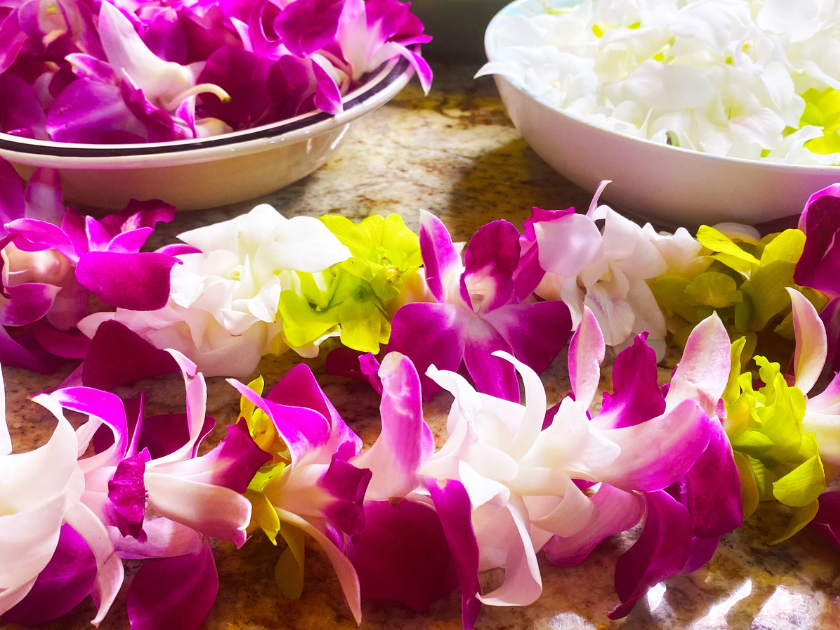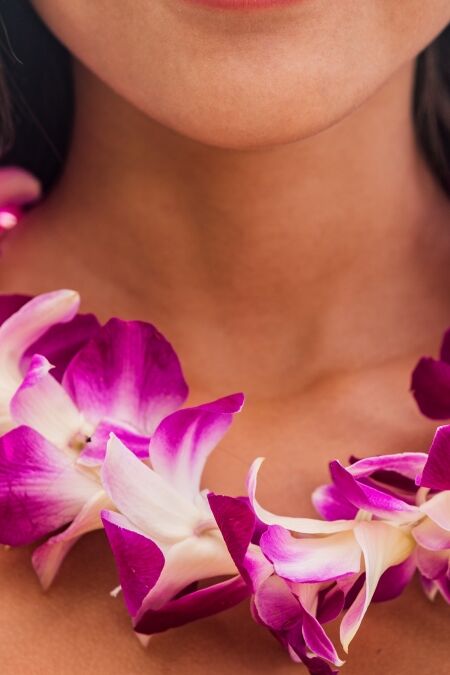Originating from ancient Polynesian navigators who brought their traditions to the Hawaiian Islands, the lei has blossomed into a revered emblem of greeting, celebration, and honor. This piece unfolds the rich history and significance of the lei in Hawaiian ceremonies and everyday life, setting the stage for an exploration of the etiquette of receiving a lei. From the gentle placement of a lei around one’s neck to the respectful gestures of acceptance, we preview the essential do’s and don’ts that encapsulate the spirit of this cherished tradition, ensuring readers can engage with this cultural practice in a manner that is both respectful and informed.
Understanding the Significance of a Lei

The lei is a profound symbol of love, respect, and hospitality in Hawaiian culture. Its significance is woven through the fabric of Hawaiian life, marking moments of joy, transition, and honor. In ceremonies ranging from graduations and weddings to the warm welcoming of visitors to the islands, the lei embodies the spirit of aloha, connecting individuals through the sharing of beauty and tradition. There are various types of lei, each crafted from different materials—flowers, leaves, seeds, nuts, feathers, and even bone—each with its unique significance and occasion. For instance, a lei made from the fragrant plumeria or the enduring maile vine can signify different expressions of affection, achievement, or sacred bond, illustrating the rich tapestry of meanings that lei hold within the Hawaiian cultural landscape.
The Do’s of Receiving a Lei

Accepting with Gratitude
When presented with a lei, it’s essential to accept it with a smile and a sense of gratitude, acknowledging the kindness and honor being bestowed upon you. This gesture is not merely an exchange of gifts but a profound expression of aloha—love and respect—making it important to receive it with both hands and immediately place it around your neck if appropriate, showing appreciation for the gesture and the cultural tradition it represents.
Proper Placement
Wearing a lei correctly is key to honoring this cultural tradition. Typically, a lei should be worn gently draped over the shoulders, hanging down both in front and back. It’s a sign of respect for the craftsmanship and symbolism of the lei, as well as for the person who gave it to you. There are specific types of lei for different occasions and methods of wearing them, so being mindful of this can add to the respect and appreciation shown towards the tradition.
Cultural Respect
Embracing the lei tradition with understanding and honor means acknowledging its roots and significance in Hawaiian culture. This involves learning about why leis are given, the appropriate times to wear them, and the meanings behind different types of lei. By doing so, one not only shows respect for the culture but also enriches their own experience by connecting more deeply with the tradition.
Photography Etiquette
Capturing the moment of receiving or wearing a lei offers a beautiful way to preserve memories, but it should be done respectfully. Always ask for permission before taking photos of someone receiving or wearing a lei, especially in more formal or sacred contexts. Be mindful of the setting and ensure that the act of taking photos does not disrupt the ceremony or the significance of the moment. This respect for both the individuals involved and the cultural practice itself is crucial in honoring the tradition.
The Don’ts of Receiving a Lei

Refusing a Lei
Refusing a lei when offered is more than a simple rejection of a gift; it can be seen as dismissing the goodwill and respect inherent in this deeply cultural gesture. Understanding the cultural implications of such a refusal is crucial, as it can be interpreted as a sign of disrespect or indifference towards Hawaiian traditions and the person offering the lei. It’s important to accept the lei with gratitude, whenever possible, to honor the culture and the spirit of aloha it represents.
Removing in Presence of the Giver
Taking off a lei in the presence of the person who gave it to you is considered disrespectful, as it may signify dissatisfaction or disregard for the sentiment and effort behind the gift. If you must remove the lei for any reason, it is polite to explain why, doing so with sensitivity and respect. The lei is a symbol of connection and to remove it abruptly can sever that symbolic bond.
Misusing or Disposing of a Lei Improperly
A lei should be treated with care and respect, not just as an ornamental accessory but as a representation of the aloha spirit. When a lei can no longer be worn, it should be disposed of properly—traditionally, lei are returned to the land by hanging them on a tree, burying them, or if made from ocean materials, returning them to the sea. Such practices reflect respect for the natural materials of the lei and the cultural tradition it upholds, ensuring the lei is honored even in its return to nature.
Ignoring Cultural Context
Every lei carries with it a story and significance that is deeply embedded in Hawaiian culture. Ignoring the cultural and spiritual significance of a lei—whether by treating it as merely a decorative item or not acknowledging its symbolic value—can lead to misunderstandings and disrespect for Hawaiian traditions. Engaging with the lei tradition demands mindfulness of its cultural context, appreciating its role in expressing connection, honor, and the spirit of aloha.
How to Properly Offer Thanks
Expressing gratitude when receiving a lei is crucial. A simple verbal “thank you,” or “mahalo” in Hawaiian, coupled with a warm smile, embodies sincere appreciation. For a deeper connection, a gentle bow or placing the lei over your heart momentarily before wearing it shows profound respect and gratitude for the gesture and the cultural tradition it represents.
Preserving Your Lei: Tips and Tricks
To preserve a lei, start by spraying it lightly with water, then gently wrap it in a paper towel and place it in a plastic bag. Store the bag in the refrigerator, not the freezer, to maintain its freshness for as long as possible. This method works best for flower leis and should be done as soon as possible after receiving the lei. For long-term preservation, drying or pressing flowers from the lei can be effective. Lay the lei out on a dry paper towel in a cool, dark place to allow it to dry naturally. For a lei made of seeds, nuts, or shells, simply keeping it in a dry, shaded area will help preserve its beauty indefinitely, turning it into a lasting memento.
Appreciate and Honor this Beautiful Aspect of Hawaiian Culture
Reiterating the importance of respecting and understanding the cultural traditions of the lei cannot be overstated. This beautiful Hawaiian custom is a profound expression of connection, respect, and aloha. We encourage readers to not only embrace and participate in Hawaiian culture with respect and knowledge but also to continue learning about the rich traditions that make it so unique. Sharing your own experiences with lei ceremonies and traditions can inspire others to foster a deeper understanding and respect for a tradition that has been cherished for generations.




